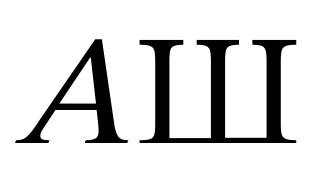Edit: The project website, GitHub repository, and Discord server for Darwin are now up!
A little context and introduction: I'm currently working on a family of fonts ("Darwin") designed for use in formal writing and optimised in particular for use in mathematics articles, books, etc. It is meant to fill the following requirements, which no currently available fonts for LaTeX fill:
- It must be completely free and open-source.
- It must have exceptional symbol coverage among many different languages, covering essentially all languages making use of the Latin, Cyrillic, and Greek alphabets.
- It must come with a number of optical sizes, which are additional font families with size-specific optimizations―think an extra font for footnotes, a font for usual paragraph text, and an extra font for book covers.
- It must come with a matching math font family to uniformise the style across the document. This includes all the usual math symbols as well as font families for
\mathbb,\mathsf, etc.
Currently the regular style of the font looks like this (please ignore the currently uneven spacing):

I have also prepared PDF samples of articles in English, Russian, and Greek compiled using the current version of the font, though please note that these contain only the regular style of the text version, and currently have very uneven spacing:
- English Sample: Bhatt–Lurie's The prismatization of $p$-adic formal schemes. Original: arXiv:2201.06124.
- Russian Sample: Sergei Akbarov's Stereotype Dualities in Geometry. Original: arXiv:2311.05131.
- Greek Sample: Grigorios Tachyridis's Krylov subspace methods for the solution of linear Toeplitz systems. Original: arXiv:2303.03223.
I should also note that these samples were compiled from sources of papers directly downloaded from the arXiv, and as such I bear no relation to their authors.
Now, for the actual question: Throughout my own research as well as discussions with friends and colleagues, I've often found situations in math which require special symbols or features from fonts/LaTeX packages, as well as distinct preferences when it comes to certain choices of fonts. For example, these include:
The use of symbols that are specific to certain areas and not usually covered by the default LaTeX fonts, like:
a) The hiragana よ for the Yoneda embedding in category theory.
b) The Cyrillic letter Ш for the Tate–Shafarevich group in arithmetic geometry.
c) The Cyrillic letter Л for the Lobachevsky function in hyperbolic geometry.
d) The Cyrillic letter Э for evolutionary vector fields on a jet bundle in some articles, e.g. this one, on the geometry of PDEs, as pointed out by Igor Khavkine.
Better glyph support for
\mathcal,\mathbb,\mathfrak, etc., such as:a)
\mathbbfor the lowercase alphabet.c) More exotic things like
\mathcalor\mathfrakfor Greek.A preference of "empty fill" (
txofstyle) over double-strucked blackboard bold (amsbbstyle) or vice versa, so that having both versions available in a font would be nice:

vs.

A bigger set of delimiters, as discussed here, for situations where one would e.g. need parentheses bigger than
\big(...\big)but smaller than\Big(...\Big).Variable size delimiters for doubled parentheses
((...)), doubled brackets[[...]]and doubled angle brackets<< ... >>, a feature request by Willie Wong.Native and easy handling of bold text and bold math for section and chapter headers, a feature request by Apoorv Potnis.
Built-in optimisation of microtype through a variable width axis, allowing for an even better spacing optimisation than microtype already wonderfully does.
Symbols for binary relations that are missing from current LaTeX packages, such as inequality versions of $\asymp$, a feature request by Iosif Pinelis.
I plan to address all these points and more in the development of Darwin, but I'm sure the above list is anything but exhaustive, and there ought to be countless more such features which would benefit the community. So, in the spirit of the items above, I'd like to ask: are there any font features you want to have as part of your work, but weren't available or required workarounds at the time you thought of them?
Here "features" should be understood as including things in the spirit of the above examples, but not limited to them.
I also want to point out that suggestions without technical details are more than welcome. Part of the reason I wanted to ask this question on MO instead of somewhere like TeX.SE is that I believe mathematicians not familiar with type design or the technicalities of LaTeX surely also have extremely valuable feedback to offer. So, for example, suggestions like "this symbol sketched by pencil below would work great for doing [x] in area [y], but I'm not aware of an implementation of it, or find the current ones flawed because of [reason]" would also be exceedingly welcome.













\asympare, strangely, missing in available LaTeX packages, but I guess this is not a matter of fonts. $\endgroup$\mathbbfor digits would also be nice. $\endgroup$